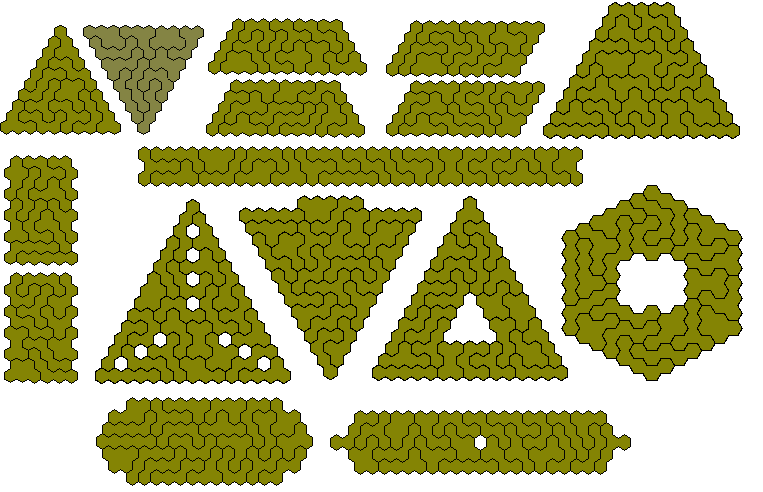There are three regular polygons which tile the plane- square, equilateral triangle and regular hexagon. Thus in the same way as a square grid gives us polyominoes and an isometric grid polyiamonds we obtain polyhexes from an hexagonal (honeycomb) grid. Such a grid is shown below with five examples of polyhexes.
If we consider the one-sided tetrahexes then we find that there are 10. These are shown in the pattern below.
There are 22 pentahexes are shown below in a pattern of two 'triangles' made by Christoph M. Hoffman which appeared in Martin Gardner's 'Mathematical Games' in the Scientific American in June 1967 together with a selection of other constructions.

We may also look for a figure with the maximum number of internal holes. The best known solution is with 30 holes.
There are 33 one-sided pentahexes shown here in three triangles with the central triangle formed from the symmetric pieces and the other two triangles being reflections of each another..
A number of symmetrical constructions are possible.
A number of the figures above are in the shape of a trapezium. An a-b trapezium as shown below will contain ½b(2a+b-1) hexagons.
For the one-sided pentahexes the total area is 165 and so we must have b(2a+b-1)=330 from which we get the following possibilities for trapezia - 54-3; 31-5; 25-6; 12-10; 4-15 - all of which are shown above.
Fixed Orientation Polyhexes
There are 44 tetrahexes if we do not allow rotation or reflection of the pieces.